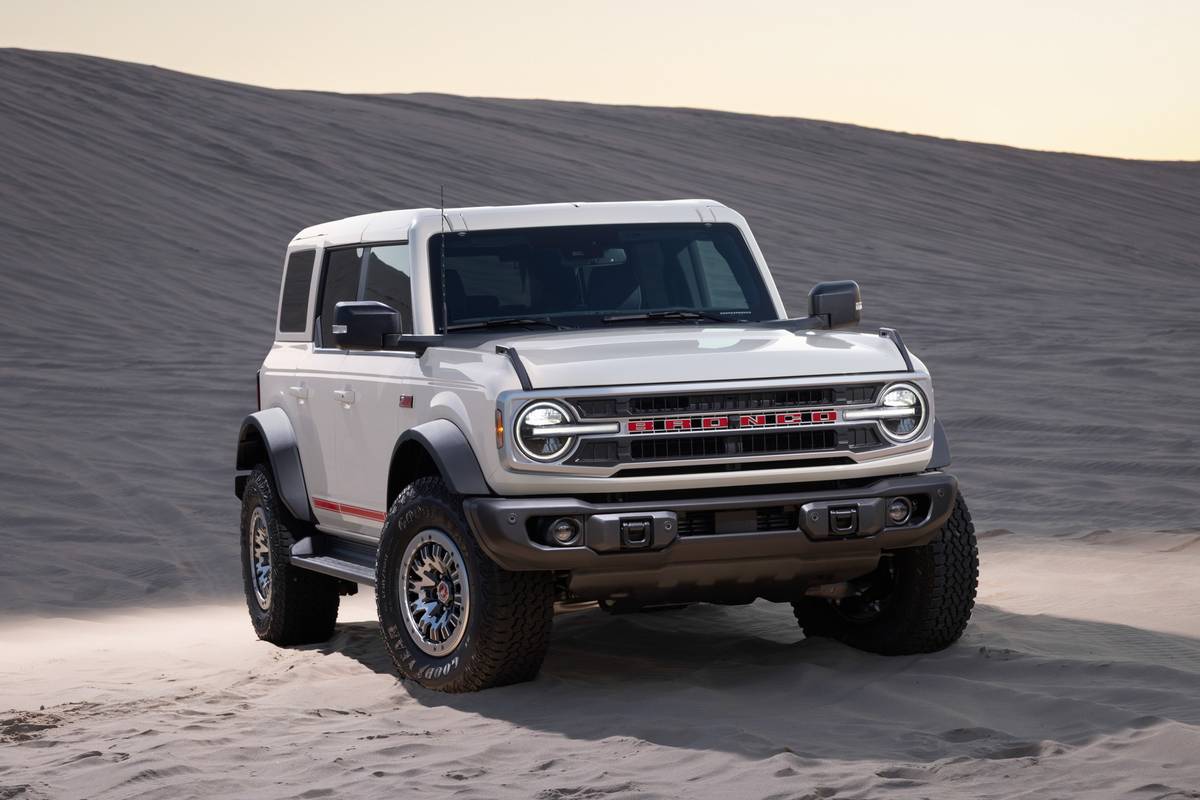AZCentral.com's view
Chevrolet Malibu is one of the primo U.S. automobile names from the ’60s, conjuring visions of sun-swept beaches and top-down cruising.
The upmarket version of the Chevelle, the Malibu was the object of much fevered longing, especially among teenage hot-rodders, and remains a favorite with Chevy restorers and collectors.
But a lot changes in 30 years, and the sleek, muscular Malibu of yore has been reborn for 1997 as a totally different sort of creature: a mid-sized family sedan. That’s because 30 years later, the Malibu has a completely different job to do.
From its size, styling and interior trim, its mission is apparent – to fire a salvo directly at the heart of Honda Accord and Toyota Camry.
Mission impossible? Well, in terms of value and appeal, the new Malibu, and its uppity Oldsmobile twin, the reborn Cutlass, have many of the attributes that make Accord and Camry perennial best-sellers.
Tight, efficient and decent-handling with an air of quality and a bargain price, the Malibu comes pretty close to those Japanese hallmarks of automotive value. The new GM cars are slightly bigger, too, with more interior and trunk space.
The new sedans also are among the best-driving General Motors cars ever built. A graphic example was presented recently, when the Malibu was sampled just before the arrival of Chevrolet’s mainstream family sedan, the Lumina.
After a week in the Malibu, the Lumina felt crude and clumsy, the steering slow and the suspension sodden. Sorry, Lumina, but you’ve been eclipsed by the newcomer.
The Malibu, on the other hand, felt lively and quick, with responsive steering, good power from its optional V-6 engine and above-par handling.
The Cutlass, with its impressive cargo of standard features and upgraded appointments, widened the gap a bit further.
But in both the new cars, basic economy-car underpinnings are revealed in such things as engine harshness and a suspension that feels too bouncy and underdamped.
The engine roar is accompanied by pronounced torque steer, which is the tendency of front-wheel-drive cars to veer to one side or the other under acceleration. The best modern cars come with that effect engineered out of the equation.
In designing the Malibu/Cutlass, GM cut development costs by using existing components from its Beretta coupe and Corsica sedan, which are being replaced by the Malibu.
The best improvement is the Malibu/Cutlass’s stiffer chassis, which improves ride, handling and the overall feeling of solidity.
For Chevy, the Malibu represents an opportunity to design some fine coupes and convertibles on this new platform, and perhaps bring luster back to the Malibu name.
Still, it would have been smart if GM designers had bent the rules a bit on these all-new cars instead of dulling them down with a look that’s so conservative and generic. Just look at Chrysler’s success in making ordinary cars look special.
Both our testers came with the op tional engine, GM’s faithful 3.1-liter V6, which feels strong enough around town but a bit weak on the open road. The standard engine is the Quad 4, recently re-engineered to be quieter and smoother.
If you want stick shift, you’ll have to go elsewhere. The Malibu/Cutlass comes only in automatic, but an excellent automatic, particularly in this price range.
The dashboard design and materials also are of a high order, with simple shapes and good proportions taking the place of the overwrought efforts in some other GM cars. There is something of a Japanese feel to the dash, a good or a bad thing, depending on your outlook.
The seat material in the Malibu was fuzzy velour stuff, but the Cutlass had nice leather seating, a smoking bargain in this price range. But why can’t designers resist that ugly, fake wood trim?
The General seems to be hitting its stride with these bread-and-butter sedans, and a few other recent successes. They’re good, up-to-date cars that speak well of the giant corporation’s design and engineering acumen, which has taken some lumps in recent years.
1997 Chevrolet Malibu
Vehicle type: Five-passenger, four-door sedan, front-wheel-drive. Base price: $15,470. Price as tested: $17,971. Engine: 3.1-liter V-6, 155 horsepower at 5,200 rpm, 185 pound-feet of torque at 4,000 rpm. Transmission: Four-speed automatic. Curb weight: 3,100 pounds. Length: 190.4 inches. Wheelbase: 107 inches. Safety features: Dual air bags, anti-lock brakes. EPA fuel economy: 20 mpg city, 29 mpg highway. Highs: Good value. Handling, steering above par. Roomy interior. Lows: Engine harshness. Torque steer. Bland styling.
Latest news


2025 Tesla Cybertruck Review: Wedge Issues

